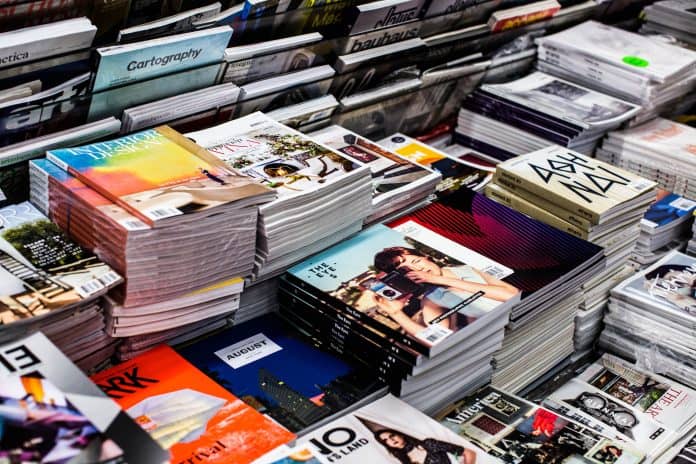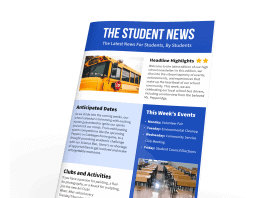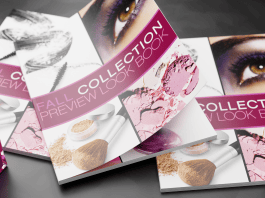Last updated on August 8th, 2024 at 12:34 pm
Choosing the right printing option is pivotal to giving your book the best possible presentation. If you’re exploring printing options for your latest work, you may wonder if a paperback book is a suitable option over a hardcover.
While researching paperback printing, you’ve probably come across the term “softcover” or “soft cover.” There is often confusion surrounding paperback and softcover books. Some people say the two are different, while others argue they are the same.
So, is there really a difference between paperback and softcovers? The debate really comes down to semantics. We’ll explore more below.
Paperback vs. Softcover: What’s the Difference?
If you Google “softcover vs. paperback,” you’ll quickly find that they mean the same thing.
In a printing context, softcover books or softback books are books with soft covers and bindings. However, the book industry uses the terms “trade paperback” or “mass-market paperback book.” A softcover will always be known as a paperback within industry circles.
From a manufacturing perspective, softcover and paperback books are also known as Perfect Bound Book Printing. When ordering from a print shop like, Printivity.com, customers have the choice between standard EVA glue or upgrade to PUR glue binding.
Trade paperbacks are books sold in a bookstore, whereas mass-market paperbacks are sold on a rack in various locations, such as grocery stores, drug stores, or bookstores. A trade paperback is typically larger and made with higher quality paper.
The average mass-market paperback will use a lower-grade groundwood paper. These books are not supposed to have an exceptionally long life expectancy, hence why they’re made for the mass market.
So, why do some people think paperback and softcovers aren’t the same? Where does the confusion come in?
Soft cover books are made from paper or thin cardboard stock versus hardcover books made from durable cardboard stock.
When looking at a soft cover book binding, the pages are bound within a pliable paper cover. The book’s cover is typically thicker than the inner pages, increasing the book’s durability. There are also cases where the softcover book cover is the same thickness. This is generally done for cost-saving reasons.
These differences are only displayed when looking at their dictionary definitions as nouns or adjectives. In practical terms, they have the same characteristics. The fundamental differences are between the trade and mass-market paperbacks (or softcovers).
Now that you know there is virtually no difference between the two, it’s time to put the “softcover vs. paperback” debate to rest.

What is a Mass-Market Paperback?
While reviewing book printing options, you may also wonder what a mass-market paperback is and how it plays into your printing journey.
The term “mass-market” applies to goods that are produced in larger quantities. With that in mind, it should come as no surprise that the mass-market paperback is the go-to printing option of choice for publishers worldwide.
Standard paperbacks are generally five or six inches wide by eight or nine inches high, whereas mass-market paperbacks are four inches wide by six or seven inches high. These books are typically made smaller to fit into spinning racks at commercial locations like airports.
They will utilize matte or gloss lamination, but as previously mentioned, some publishers may decide on the original cover material to keep their printing costs down. Some paperbacks, such as special editions, may even contain some embossing on the front.
Mass-market printing focuses less on beautifying books and more on quantity. It’s not uncommon for print runs of mass-market paperbacks to exceed 200,000.
Smaller publishers and self-published authors without the six-figure investments available for a mass-market run may opt for digital printing instead.
Short-run digital printing allows you to print your book at a lower cost per unit without spending thousands on ordering an extended print run. You won’t gain access to the same low unit cost as a true mass-market paperback, but the size and quality of the result will remain. Either way, short-run digital printing has never been more affordable.
More and more printers, including Printivity, are catering to people searching for shorter print runs. These are the previously mentioned print shops that refer to softcover as Perfect Bound. In previous years, publishers had considerable minimum order sizes, but with the rise of self-publishing and print-on-demand services, the industry has had to adjust.
Softcover Book Printing: Pros and Cons
Are you wondering whether the paperback route is the correct path for your newest publication?
At this point, many compare soft cover vs. hard cover printing options too. Let’s run through the primary pros and cons of each.
Pros
Soft cover textbooks and novels remain the most popular printing option. It should come as no surprise because they’re designed to be affordable without compromising on the quality of the reading experience.
Here are the main advantages of the average paperback:
- Easy to Carry – Softcovers are designed to be light and portable. Unlike hardbacks, you can easily slip a small paperback into a coat pocket or handbag.
- Cost–Effective – Paperbacks grew in popularity because they offer the most affordable printing and binding combination. Publishers opting for long print runs will typically opt for softcover options for this reason.
- Flexible – You can print your softcover in any way you see fit, including for those who struggle with their vision.
- Easy Distribution – There’s nowhere in the world that will not accept paperback books for sale. Everywhere from Main Street bookshops to gas stations will handle paperbacks. The same can’t be said for hardcover books.
- Affordable to Mail – The lighter weight and smaller size of these books make them more cost-effective to ship, including by conventional local mail.
Cons
Despite their popularity, paperbacks do have their downsides. When thinking about the best printing option for you, it’s necessary to figure out whether the cons make this an impractical printing solution for your newest book.
Here are the cons you need to consider:
- Damage – The covers of softcovers are printed on paper or thin cardboard. They offer less durability, meaning they can be easily damaged if not cared for. However, you can easily increase the paperback books shelf-life by protecting the covers with matte or gloss lamination.
- Lower Profit Margins – If you’re selling your books, paperbacks might be cheap to make, but the higher competition means that you can expect lower profit margins.
- Presentation – Hardcovers are known for their firmness and aesthetics. While more expensive, there’s no denying that a hardcover far surpasses a paperback in terms of its presentation.
Unique Binding Option
Softcover and hardcover books have a wide variety of uses and purposes, but no matter what you choose, you’ll have a professional looking book.

However, there are benefits to choosing a binding option that might not look as professional, but it will exceed your expectations. Three-ring binders are one of the newest binding offerings at Printivity. Binders offer two different products that, when combined, create an infinitely interchangeable binding option that includes three-ring binders and binder documents.
All three ring binder offerings hold 8.5″ x 11″ documents, but you can choose different spine thicknesses, depending on how much you need it to hold. The spine thicknesses offered are 0.5″, 1.0″, 1.5″, 2.0″, and 3.0″. You can also choose to print custom front and back covers and a spine to match your brand and purpose of the binder, which are showcased in the clearview pockets.
Printivity’s binder documents let you choose between black-and-white and color copies. A three-hole punch is included to easily add to your binder. Add divider tabs to your order when you want to find the exact section as fast as possible. These divider tabs extend 0.5″ past the other documents to quickly thumb through the sections.
Let Printivity Meet Your Book Printing Needs
Deciding on the right publishing option for you is tough. If you can’t decide, let Printivity help.
We provide custom book printing services, including multiple binding and paper types. Look at our examples and templates to see what your masterpiece could look like.
If you need help creating the book you had in mind, get in touch with Printivity and let our team help you with perfect bound book printing.
To get started on your next book design, contact Printivity now.





